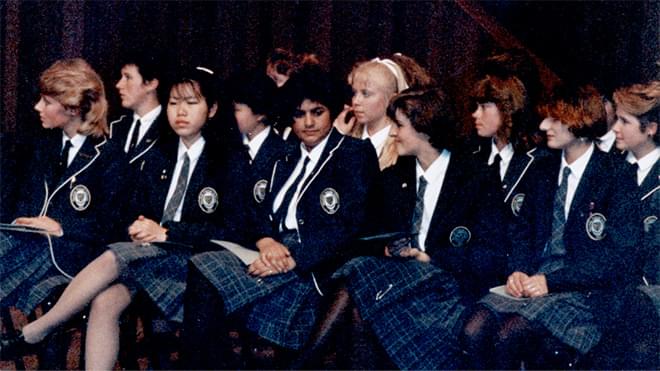In 1934 a father being interviewed by Major Ian Simpson for a placement of his son into Glenlyon, voiced his regret that there was no boxing at the school and that he was a firm believer in boys learning the manly art of fisticuffs. The following year boxing lessons began once-a-week.
The desks in the Senior classroom were moved out of the way to provide space, but there were no ropes outlining a ring. Al Mckinnon, brother of the more well-known Canadian Sports Hall of Famer Archie Mckinnon, coached the boys in the rudiments of the sport with his encouraging words like; keep your guard up, stay on your toes and get in there and punch.
Few old boys have ever come forward to say they enjoyed boxing but the headmaster thought it was important to his idea of training boys to be men. There were many tales representing the negative side of the argument. “My very worst experience at Glenlyon was being forced to take boxing without my glasses. Without them I couldn’t see what the other boy was up to nor aim a punch very well.” “There was a boy who would run round the Boathouse (the gym in early days) and over the benches, to the admonishment of the headmaster who would call out “stand still boy” while his opponent would run after him trying to land a punch”.
However, the Major considered the ability to defend yourself with your fists a manly attribute, although when a new boy who was teased and left a bruised cheek and ego on another, that boy was admonished for his physical retaliation. A few years later, that same boy went on to win the Jones Trophy for Senior boxing.
After the school moved to Beach Drive, the climax of the boxing training was a display for parents held regularly at St. Mary’s Church Hall on Elgin Road. The 1942 photograph shows the rope for the boxing ring kept taut by tying it to chairs upon which the heaviest boys were instructed to sit.
Often referred to as a ‘blood sport,’ one student’s account of boxing at school certainly qualifies as that. “The highlight of any contest was the production of blood. With me around, no one was ever disappointed for I had a nose that would bleed like a fountain from the slightest agitation. On one memorable occasion I was about 30 seconds into the bout when I caught a straight left to the nose and mouth. Blood spurted everywhere and timeout was called by the referee. The Major was less than sympathetic and exclaimed loudly, ‘It’s only blood, and he has lots left, so continue the round.’ I was disappointed after my shower that I looked none the worse with no battle scars to show my parents other than the bundle of bloodied clothes taken home for washing,” Richard Goodall 1950-54.
By the time Hamish Simpson succeeded his father as Headmaster, boxing was on its way out as a school activity. It had become voluntary rather than mandatory and the occurrence of some injuries, like a chipped tooth, put pressure on its demise. In 1965, boxing was replaced by sailing, a sport that greatly appealed to boys and the new Headmaster, and the last time a boxing glove was seen at the school was as a prop in the staff play Happiest Days of Your Life in 1977.





